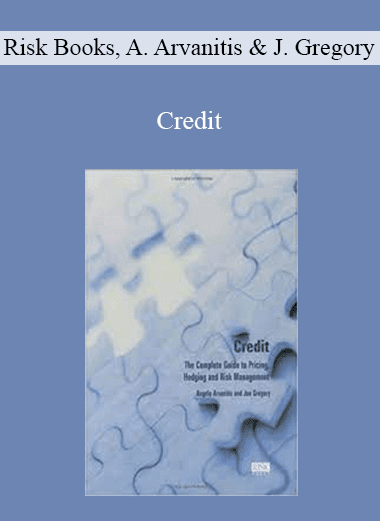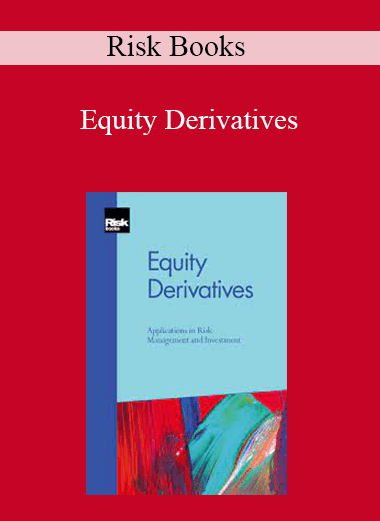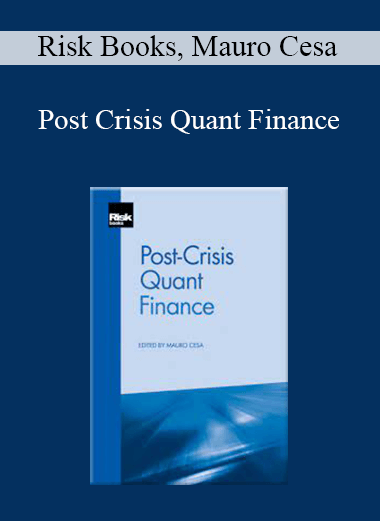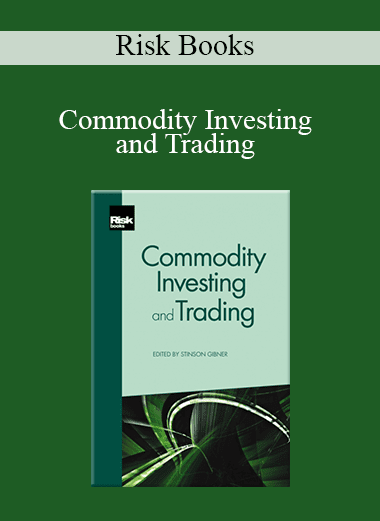Risk Books, Angelo Arvanitis and Jon Gregory – Credit
$103.00 Original price was: $103.00.$33.00Current price is: $33.00.
Digital Download: You will receive a download link via your order email after successful payment
Emphasises fixed income instruments rather than loans, where stochastic future exposures are modelled accurately. Provides a thorough analysis of the pricing and hedging of basket credit derivatives and other credit contingent products…
Credit
Edited by Angelo Arvanitis and Jon Gregory
- Emphasises fixed income instruments rather than loans, where stochastic future exposures are modelled accurately
- Provides a thorough analysis of the pricing and hedging of basket credit derivatives and other credit contingent products
- Examines loans, credit derivatives, interest rate derivatives with risky counterparties and convertible bonds
- Adapts credit derivative modelling techniques in order to price and hedge the credit component in fixed income derivatives
- It provides a practical discussion of market frictions that impact credit trading
- Complex theoretical issues are illustrated with an unusually high number of examples, tables and figures that have been designed with the practitioner in mind
- Proofs and technicalities are discussed in the appendices of each chapter
TABLE OF CONTENTS
Introduction
PART I – CREDIT RISK MANAGEMENT
1 – Overview of Credit Risk
1.1 Components of Credit Risk
1.2 Factors Determining the Credit Risk of a Portfolio
1.3 Traditional Approaches to Managing Credit Risk
1.4 Market Risk versus Credit Risk
1.5 Historical Data
1.6 Example of Default Loss Distribution
1.7 Credit Risk Models
1.8 Conclusion
2 – Exposure Measurement
2.1 Introduction
2.2 Exposure Simulation
2.3 Typical Exposures
2.4 Conclusion
3 – A framework for Credit Risk Management
3.1 Credit Loss Distribution and Unexpected Loss
3.2 Generating the Loss Distribution
3.3 Example – One Period Model
3.4 Multiple Period Model
3.5 Loan Equivalents
3.6 Conclusion
Appendix
Derivation of the Formulas for Loan Equivalent Exposures
4 – Extensions of the General framework
4.1 Analytical Approximations to the Loss Distribution
4.2 Monte Carlo Acceleration Techniques
4.3 Extreme Value Theory
4.4 Marginal Risk
4.5 Portfolio Optimisation
4.6 Conclusion
PART II – PRICING AND HEDGING OF CREDIT RISK
5 – Credit Derivatives
5.1 Default Swaps, Asset Swaps and Risky Bonds
5.2 Worst-of and Baskets
5.3 Other Credit Contingent Contracts
5.4 Other Products and Exotics
5.5 Conclusion
6 – Pricing Counterparty Risk in Interest Rate Derivatives
6.1 Introduction
6.2 Overview
6.3 Expected Loss versus Economic Capital
6.4 Portfolio Effect
6.5 Market Variables
6.6 Interest Rate Swaps
6.7 Cross Currency Swaps
6.8 Caps and Floors
6.9 Swaptions
6.10 Portfolio Pricing
6.11 Extensions of the Model
6.12 Hedging
6.13 Conclusion
7 – Credit Risk in Convertible Bonds
7.1 Introduction
7.2 Basic Features of Convertibles
7.3 General Pricing Conditions
7.4 Interest Rate Model
7.5 Firm Value Model
7.6 Credit Spread Model
7.7 “Link“ of the two Models
7.8 Hedging of Credit Risk
7.9 Conclusion
8 – Market Imperfections
8.1 Liquidity Risk
8.2 Discrete Hedging
8.3 Asymmetric Information
8.4 Conclusion
Get download Risk Books, Angelo Arvanitis and Jon Gregory – Credit at IMC.sale right now!
Delivery Method
– After your purchase, you’ll see a View your orders link which goes to the Downloads page. Here, you can download all the files associated with your order.
– Downloads are available once your payment is confirmed, we’ll also send you a download notification email separate from any transaction notification emails you receive from IMC.sale.
– Since it is a digital copy, our suggestion is to download and save it to your hard drive. In case the link is broken for any reason, please contact us and we will resend the new download link.
– If you cannot find the download link, please don’t worry about that. We will update and notify you as soon as possible at 8:00 AM – 8:00 PM (UTC+8).
Thank You For Shopping With Us!
Be the first to review “Risk Books, Angelo Arvanitis and Jon Gregory – Credit” Cancel reply
Related Products
Business & Sales
Everything Else
Forex & Trading









8 reviews for Risk Books, Angelo Arvanitis and Jon Gregory – Credit
There are no reviews yet.